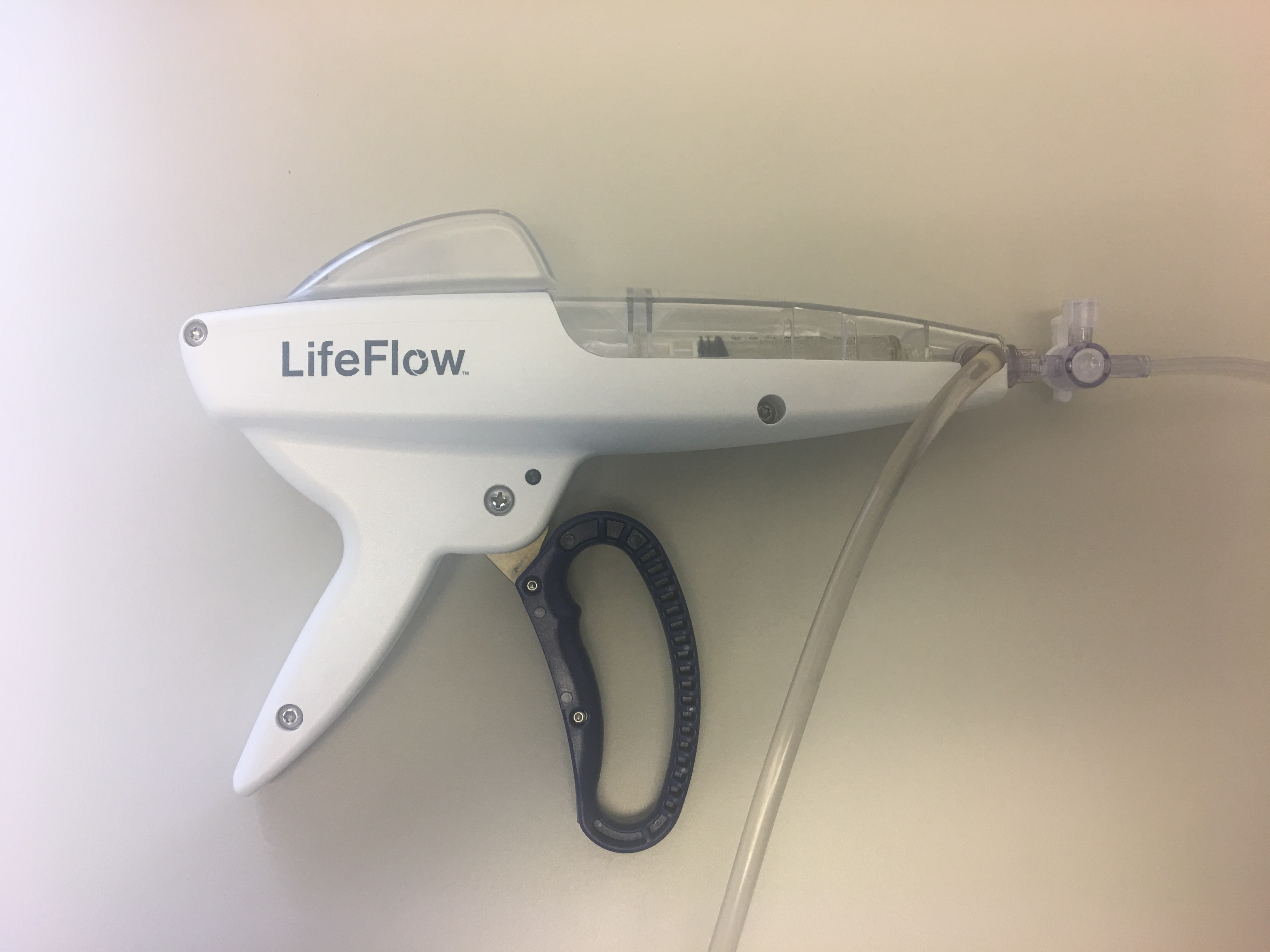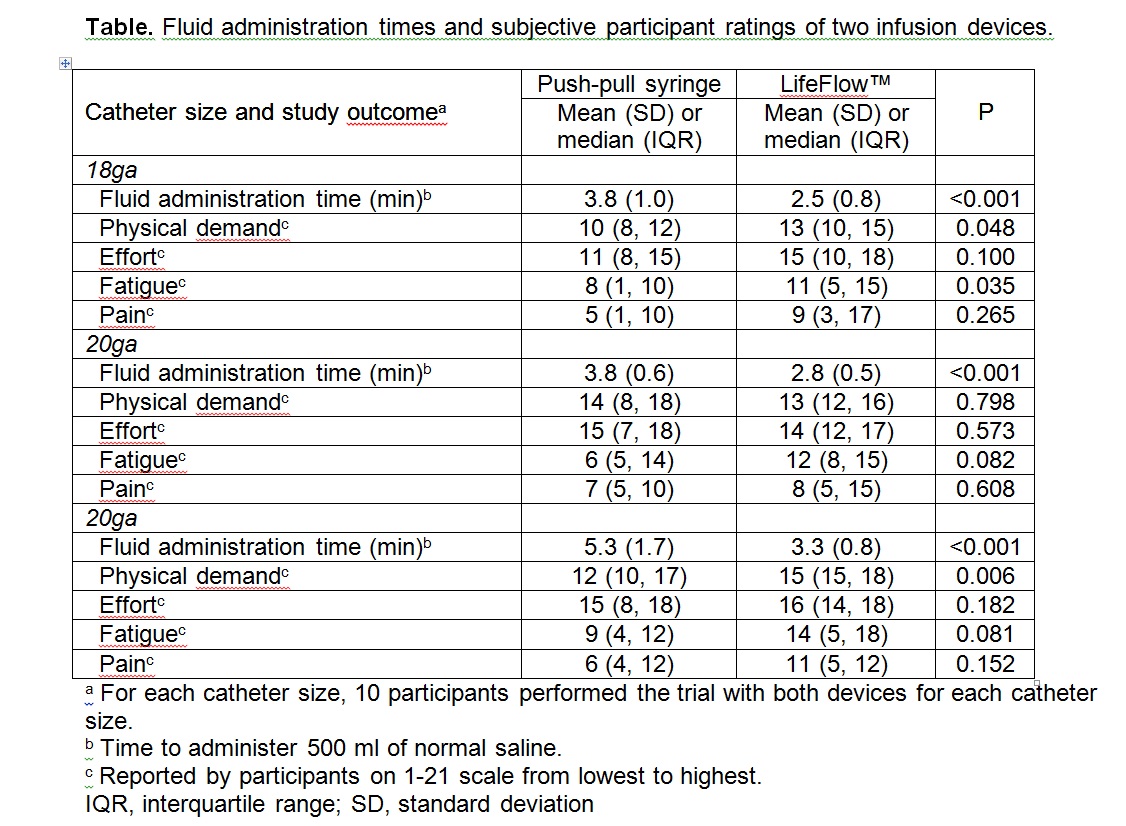NM-307
Rapid fluid administration with the LifeFlowâ„¢ device and push-pull syringe
Gillis H, Walia H, Hakim M, Syed F, Tumin D, Tobias J
Nationwide Children's Hospital, Columbus, OH, USA
Introduction: The rapid administration of fluid remains a cornerstone in intraoperative resuscitation, the treatment of shock, and the care of trauma patients. A range of devices and technologies are available to increase the speed with which fluid can be administered. While new devices may optimize fluid delivery times, their impact on subjective provider experience compared to traditional methods is not well documented. In this study, we compared objective and subjective outcomes using the LifeFlowâ„¢ and the traditional push-pull syringe method in an in vitro model of rapid fluid infusion.
Methods: This study was a prospective, non-blinded trial. Anesthesia providers at a tertiary children’s hospital were recruited to administer 500 mL of isotonic crystalloid through an intravenous catheter with both the LifeFlow™ device and with the push-pull syringe setup (Figure ). Based on a previous in vitro study, 10 pairs of trials were planned for each of the following catheter sizes: 18g, 20g, and 22g. Fluid administration time was compared between devices using paired t-tests. Participants’ subjective physical demand, effort, pain, and fatigue when using each device were recorded using 21-point visual analog scales (VAS, from 1=lowest to 21=highest ), and compared between devices using sign-rank tests.
Results: A total of 30 participants successfully completed the trial with both a LifeFlow™ and a push-pull device. Results for each catheter size are summarized in the Table. Fluid administration time was significantly decreased with the LifeFlow™ compared to the push-pull device in the 18 gauge (2.5 ± 0.8 vs. 3.8 ± 1.0 minutes, p<0.001), 20 gauge (2.8 ± 0.5 vs. 3.8 ± 0.6 minutes, p<0.001), and 22 gauge (3.3 ± 0.8 vs. 5.3 ± 1.7 minutes, p<0.001) trials. However, no reductions in physical demand, effort, pain, or fatigue were found with the LifeFlow™ as compared to the push-pull syringe (Table).
Discussion: The LifeFlowâ„¢ device achieved faster fluid administration time compared to the push-pull syringe method in our simulated scenario. However, several participants noted discomfort with this device, and subjective ratings of effort and fatigue did not show improvement commensurate with the shorter fluid administration time. Further ergonomic development may aid in acceptance of new devices offering accelerated fluid delivery times.
References:
1. Balaban O et al. Pediatr Emerg Care 2017 Epub ahead of print
2. Piehl M et al. Ann Emerg Med 2017;70:S150.
Top













